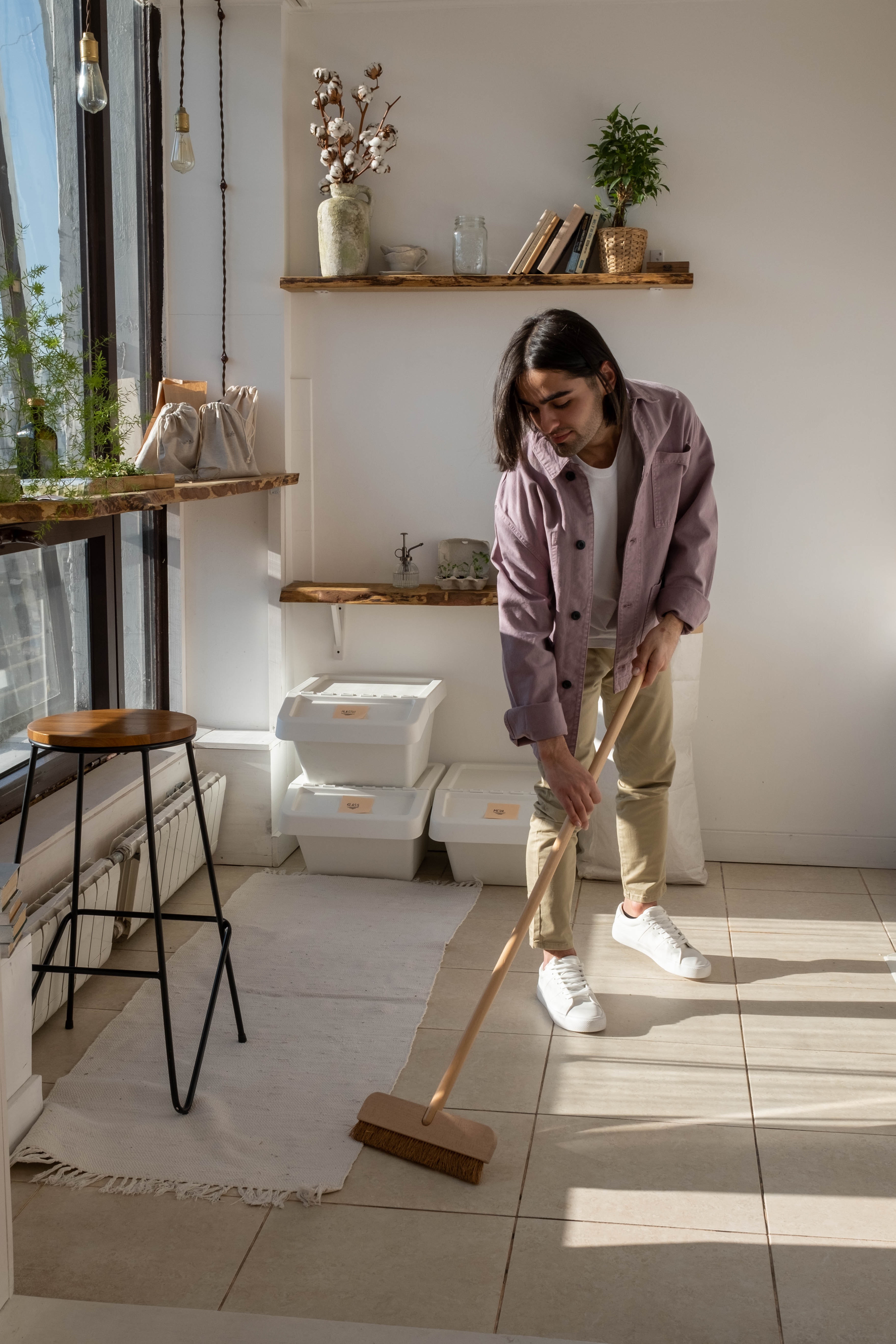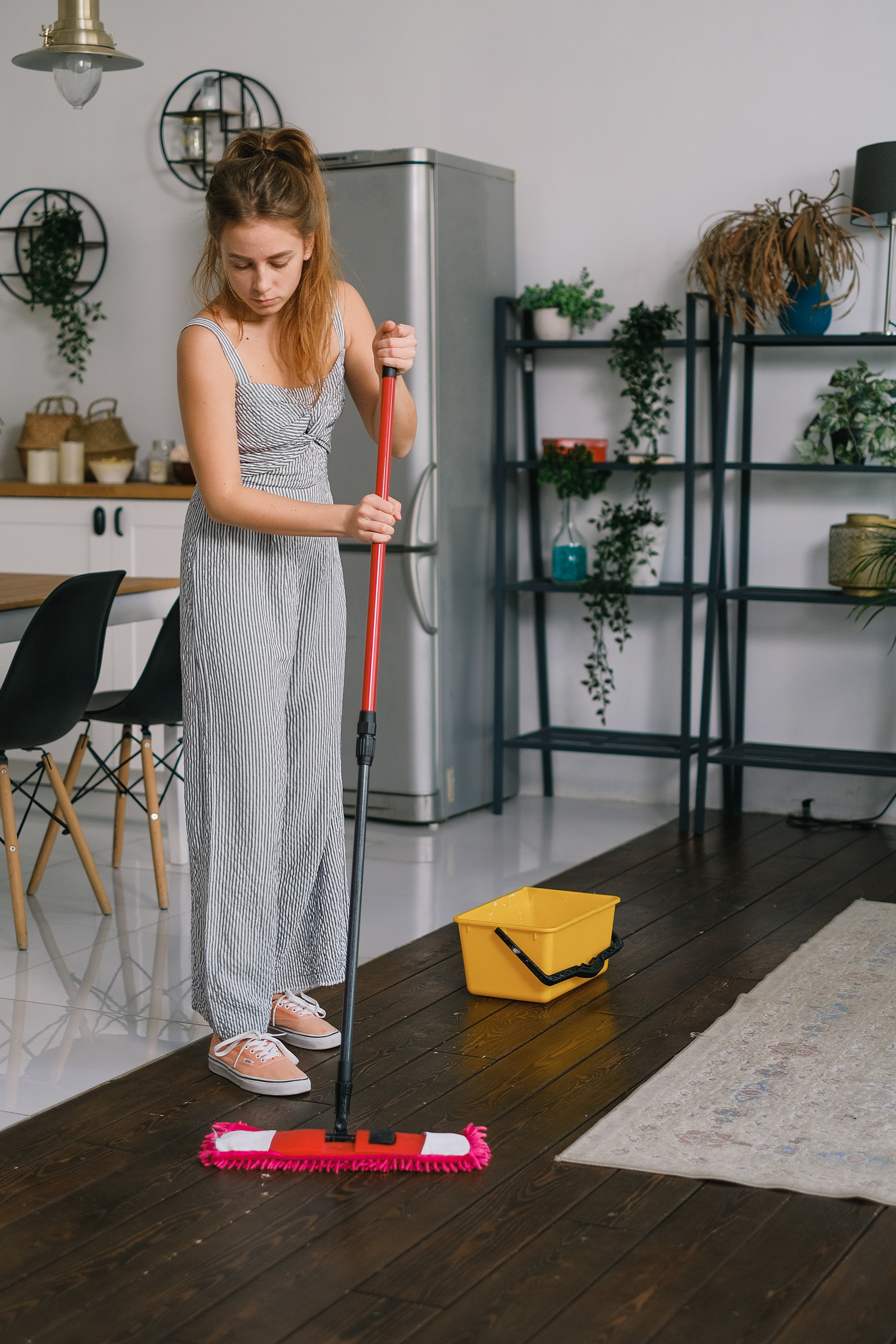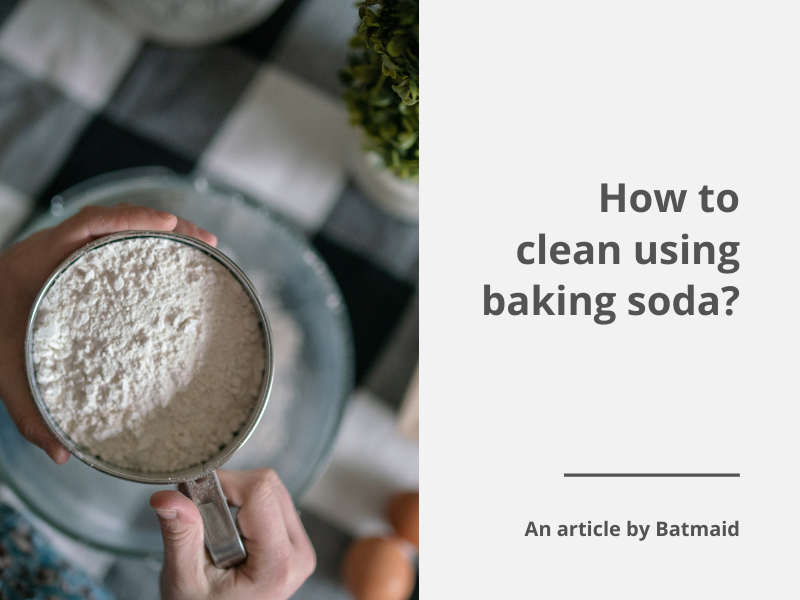How to mop the floor?
March 22nd at 9:39pm

Without the right method and the right tools, mopping can quickly become a real chore. But don't panic! Batmaid tells you all about grandma's methods and tricks to mop properly in the blink of an eye, to get floors that shine with unparalleled cleanliness.
What kind of mop to use when mopping?
A quality mop is essential to effectively clean your floors. Find the right one!
The mop
Made of large microfiber or cotton mops, the mop is simple to use and can be particularly effective on heavily soiled floors. Together with a conventional bucket with a wringer, it allows you to wring out your mop without having to bend down. A double-bucket is ideal for rinsing your mop, as it provides better hygiene and high-quality floor cleaning. However, the mop has several disadvantages. Firstly, the wringer cannot always extract the water from the fibres properly, and a badly wrung out mop can leave unsightly marks on light or shiny floors. In addition, mopping with a badly wrung-out mop does not allow floors to dry quickly. In this sense, it is best to avoid mopping with a mop on fragile floors, such as untreated parquet, for example.
The Spanish mop
Like the mop, the Spanish broom allows you to mop without having to bend down to wring it out. Increasingly popular, the Spanish mop has finer and more mops than the traditional mop. These are easier to wring out and form a thick, compact mop that is very effective against stubborn marks and dirt: a formidable ally for cleaning your floors in no time!
The flat broom
The flat broom, ideal for spot cleaning or small surfaces, can be adapted to many situations. Sold on its own, its cloth wipe can be wrung out by hand with a bucket. Equipped with a rotating wringer tray, it allows for optimal wringing out without effort. The great advantage of the flat mop is that its wipe can be chosen in a material adapted to your needs:
- Microfibre;
- Cotton;
- Fringed fabric, etc.
You can also machine wash your wipe and reuse it over and over again, an ecological and particularly hygienic solution.
The classic cotton mop
The ancestor of the mop, the classic cotton mop, used with a nylon or quack mop, is no longer very popular. The hand wringing or the strong pressure that must be exerted to obtain a satisfactory result make this tool very unattractive. Nevertheless, it is particularly effective when used properly.

In many shops, you can find countless references for household products for mopping. Special tiles, special parquet, citrus scent or eucalyptus; it is sometimes difficult to find your way around... Are there alternatives to commercial cleaning products that are more effective, more natural or better suited to my floors?
There are many household products available, some of which are suitable for floors as well as for the various surfaces in the home. This is the case for:
- Marseille soap;
- Black soap;
- White vinegar.
These products are very effective and are excellent alternatives to industrial products, which are sometimes very chemical. Marseille soap is ideal for tiles. Pour 4 tablespoons into 2.5 litres of hot water. If you choose a solid soap, simply grate it. Add a few drops of lemon juice to your solution to improve its disinfecting power.
Black soap has a strong degreasing power. It is ideal for cleaning very dirty or greasy floors, such as kitchen tiles. Use it in the same way as Marseille soap.
White vinegar, a great ally for cleaning all the rooms in the house, is also very effective in making your floors shine! Pour 100 ml of it into 2.5 litres of hot water.

To add a pleasant scent to your homemade household products, add 2 to 5 drops of the essential oil of your choice. Eucalyptus, citrus, peppermint, lavender... the choice is yours!
Finally, did you know that the starch contained in potato cooking water has incredible cleaning properties? Use the precious liquid to mop, shine your tiles and remove grease from the floor. These unsuspected virtues make potato cooking water an authentic grandmother's trick!

